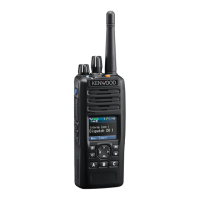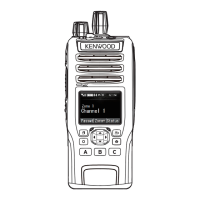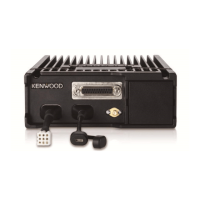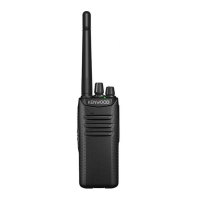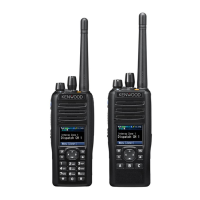How to fix LCD displaying control abnormal value on Kenwood NX-5300?
- AAnthony BrennanAug 17, 2025
If the LCD of your Kenwood Transceiver displays an abnormal control value, remove the following parts: C47, R21, R39, R66, Q32, IC36, and IC61.
How to fix LCD displaying control abnormal value on Kenwood NX-5300?
If the LCD of your Kenwood Transceiver displays an abnormal control value, remove the following parts: C47, R21, R39, R66, Q32, IC36, and IC61.
What to check if CS4 has an abnormal voltage in Kenwood NX-5300?
If CS4 has an abnormal voltage in your Kenwood Transceiver, check the terminal of L802, re-insert the FPC of the LCD module, and replace the LCD module.
What to do if IC706 (1 pin) is 0V or 1.8V in Kenwood NX-5300?
If IC706 (1 pin) is 0V or 1.8V in your Kenwood Transceiver, remove the following parts: SBC MPU/DSP side R21 3.3V C47 R21 R39 R66 Q32 IC36 IC61.
What does it mean if Reset/Control signal has an abnormal value in Kenwood Transceiver?
If the Reset/Control signal of your Kenwood Transceiver has an abnormal value, and correcting the voltage doesn't solve the issue, it indicates a problem other than the BGA parts.
Why my Kenwood Transceiver cannot be powered on?
If your Kenwood Transceiver cannot be powered on and the LCD does not function, it may be due to broken BGA parts on the printed circuit board (XC1-0341-82/XC1-0341-83). It is recommended to bring the printed circuit board in for service.
What to do if /FRST is always 0V in Kenwood NX-5300 Transceiver?
If /FRST is always 0V on your Kenwood Transceiver, remove D705 to check the voltage of the Flash memory side R747.
What to do if CN2 voltage is less than 6V in Kenwood NX-5300 Transceiver?
If CN2 voltage is less than 6V on your Kenwood Transceiver, charge the battery.
How to check voltage of the 33M in Kenwood NX-5300 Transceiver?
To troubleshoot an abnormal voltage at 33M on your Kenwood Transceiver, remove L712 to check the voltage of the 33M.
How to check voltage of the 18M_3 in Kenwood NX-5300 Transceiver?
To troubleshoot an abnormal voltage at 18M_3 on your Kenwood Transceiver, remove L719 to check the voltage of the 18M_3.
How to check voltage of the 18M in Kenwood NX-5300 Transceiver?
To troubleshoot an abnormal voltage at 18M on your Kenwood Transceiver, remove L710 and L711 to check the voltage of the 18M.
Warning about RF energy use and potential interference.
FCC Part 15 compliance for residential interference.
Essential safety rules for charging, usage, and component handling.
Warnings for operating near explosives, medical devices, and in hazardous atmospheres.
Precautions to maintain waterproof efficiency regarding seals and sheets.
Advice on using the transceiver while driving and exposure to extreme temperatures.
Precautions for battery terminals, disposal, straps, and static electricity.
Critical warnings about battery disassembly, short-circuiting, heat, and water.
Avoiding high temperatures and water immersion for battery safety.
Warnings for charging duration, using damaged batteries, and polarity reversal.
Conformance to Military Standards and IP ratings for water resistance.
Guidelines for maintaining water resistance and cleaning.
Steps for attaching and detaching the battery pack.
Instructions for securely attaching the antenna.
How to attach the belt clip using supplied screws.
Securing the cap for the universal connector.
Connecting external audio accessories.
Identification and basic function of transceiver controls and keys.
Explanation of the display layout, function icons, and indicators.
How to turn the transceiver on/off and adjust audio volume.
Steps to select operating zones and channels for communication.
Procedures for sending and receiving audio signals using the PTT switch.
| Power Output | 5W (VHF), 4W (UHF) |
|---|---|
| Waterproof Rating | IP67 |
| RF Output Power | 5W (VHF), 4W (UHF) |
| Zones | 128 |
| Operating Voltage | 7.5V DC ±20% |
| Battery Life (Digital) | Up to 15 hours |
| GPS | Yes |
| Bluetooth | Yes |
| Ingress Protection | IP67 |
| Operating Temperature | -30°C to +60°C |
| Battery Life | Up to 15 hours (digital), up to 13 hours (analog) |
| Channel Spacing | 12.5/25 kHz |
| Battery Life (Analog) | Up to 13 hours |
| Digital Protocol | NXDN, DMR |
| Display | Color LCD |
| MIL-STD | MIL-STD-810 C/D/E/F/G |
| Modulation | 16K0F3E, 11K0F3E |
| Frequency Range | 136-174 MHz |
